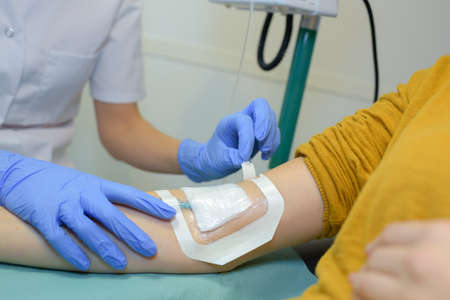Understanding the Modern Mummy Makeover
The concept of the “mummy makeover” has gained significant popularity across Britain as more women seek to restore their confidence and well-being following pregnancy. In the UK, a mummy makeover typically refers to a bespoke combination of cosmetic treatments, designed to address changes in the body post-childbirth—most commonly focusing on fat reduction, skin tightening, breast enhancement or lift, and abdominal contouring. British women often consider these procedures not only for aesthetic reasons but also to support their overall health and self-esteem as they juggle family, work, and personal life. Distinct from trends seen elsewhere, the approach in Britain is influenced by practical factors such as NHS availability for non-cosmetic needs, private healthcare access, cultural attitudes towards body image, and a preference for natural-looking results. Many patients are motivated by a desire to feel comfortable in their own skin again, whether that means fitting into pre-pregnancy clothes or simply feeling confident at the school gates or local leisure centre. Moreover, considerations unique to the British lifestyle—like unpredictable weather affecting recovery routines and a strong emphasis on subtlety—play a crucial role in shaping treatment choices. Ultimately, a modern mummy makeover in Britain is about regaining physical comfort and emotional assurance in a way that aligns with local values and healthcare expectations.
2. Fat Reduction Solutions: Popular Treatments and Techniques
For many British mothers considering a mummy makeover, fat reduction is often the first step in reclaiming body confidence post-pregnancy. The UK offers a range of both non-surgical and surgical options tailored to suit different needs, lifestyles, and expectations. Here’s an overview of the most frequently chosen solutions:
Non-Surgical Fat Reduction Options
Non-invasive techniques are increasingly popular across Britain due to minimal downtime and reduced risk. CoolSculpting (cryolipolysis) leads the way, using controlled cooling to target and eliminate stubborn fat cells, especially in areas like the abdomen and thighs. Other emerging options include radiofrequency-based treatments and ultrasound therapy, both available in reputable clinics throughout the UK.
Key Non-Surgical Methods
| Treatment | How It Works | Downtime | Common Areas Treated |
|---|---|---|---|
| CoolSculpting | Freezes fat cells for natural elimination | Minimal to none | Abdomen, thighs, flanks |
| Radiofrequency Therapy | Uses heat to break down fat cells | None | Belly, hips, arms |
| Ultrasound Cavitation | High-frequency sound waves disrupt fat tissue | None | Larger body areas like waist and legs |
Surgical Fat Reduction: Liposuction and Beyond
Liposuction remains one of the most effective surgical interventions for those seeking more dramatic results. In Britain, it is performed by GMC-registered plastic surgeons under strict safety protocols. The procedure physically removes excess fat deposits through suction, providing immediate reshaping of targeted areas. While recovery involves some downtime, many mums find liposuction delivers long-lasting improvements not achievable with non-surgical methods alone.
Lifestyle-Based Weight Management
No mummy makeover is complete without addressing lifestyle habits. Personalised nutrition plans and regular physical activity are essential foundations for lasting fat reduction. Many British clinics collaborate with dietitians and fitness experts to create sustainable weight management strategies—whether as a standalone approach or in conjunction with clinical treatments.
Together, these options allow British mothers to choose a tailored fat reduction plan that aligns with their goals, timetable, and personal preferences as part of a comprehensive mummy makeover journey.

3. Skin Tightening and Body Contouring Innovations
As more women in Britain seek to restore confidence after childbirth, advanced skin tightening and body contouring procedures have become increasingly popular. Today’s UK clinics offer a wide range of non-surgical and minimally invasive options, utilising cutting-edge technology to deliver effective results with minimal downtime. Leading clinics in London, Manchester, Birmingham, and Edinburgh now provide treatments such as radiofrequency skin tightening, ultrasound-based therapies like Ultherapy, and laser-assisted contouring methods. Many of these procedures specifically target areas prone to post-pregnancy laxity, including the abdomen, thighs, and arms.
One notable innovation is the use of high-intensity focused ultrasound (HIFU), which stimulates collagen production deep within the skin without damaging the surface—making it particularly suited for British skin types that may be sensitive to more aggressive treatments. Additionally, combination therapies are gaining traction across the UK; practitioners often blend technologies such as microneedling with radiofrequency or cryolipolysis (“fat freezing”) to maximise outcomes and address both fat reduction and skin firmness in one session.
It’s important to note that aftercare recommendations in Britain are tailored not just to clinical best practice but also to local weather conditions. For example, because the UK climate can be cool and damp for much of the year, clinics advise patients on how to protect treated skin from wind exposure, maintain hydration during indoor heating periods, and avoid prolonged sunbathing during rare heatwaves. Reputable British providers emphasise a holistic approach—offering advice on skincare products suitable for UK conditions and scheduling follow-up appointments to monitor results.
By choosing established local practitioners who understand both the technical aspects of these innovations and the practical realities of life in Britain, patients can expect safer procedures and superior long-term outcomes. This commitment to evidence-based practice and patient education sets UK clinics apart in the evolving landscape of mummy makeover treatments.
4. Breast Enhancement and Restoration Post-Pregnancy
For many women in Britain, pregnancy and breastfeeding can lead to significant changes in breast shape and volume. Addressing these concerns is a crucial part of a comprehensive mummy makeover. British patients often consider both breast lifting (mastopexy) and augmentation (implants or fat transfer) to restore their pre-pregnancy silhouette, with choices shaped by local preferences, available healthcare pathways, and cultural attitudes towards cosmetic procedures.
Popular Treatment Options in the UK
| Treatment Type | Description | Typical Patient Preference |
|---|---|---|
| Breast Lift (Mastopexy) | Lifts sagging breasts without adding volume; may reposition nipple for natural look. | Preferred by women seeking a subtle, natural result without implants. |
| Breast Augmentation (Implants) | Adds volume using silicone or saline implants; choice of shapes and sizes available. | Popular among those looking for fuller breasts or significant volume restoration. |
| Fat Transfer Augmentation | Uses patient’s own fat (harvested from other areas) to enhance breast shape/size. | Favoured by those wanting modest enlargement with a natural feel. |
| Combined Lift & Augmentation | Merges mastopexy with implants or fat grafting for both lift and fullness. | Chosen when both sagging and loss of volume are present post-pregnancy. |
NHS vs Private Pathways for Breast Procedures
The NHS generally restricts breast enhancement surgeries to cases involving congenital deformity, cancer reconstruction, or severe psychological distress. For most post-pregnancy cosmetic improvements, private clinics are the primary route. Consultations typically involve detailed assessments to ensure suitability, with regulated clinics adhering strictly to GMC (General Medical Council) and CQC (Care Quality Commission) standards. Recovery support varies between providers but usually includes follow-up appointments and aftercare advice tailored to UK clinical guidelines.
Cultural Perceptions and Social Considerations
In Britain, attitudes toward cosmetic breast surgery have evolved significantly over the past decade. There is increasing openness about seeking help for post-pregnancy changes, yet discretion remains important for many patients. The trend leans toward natural results—avoiding excessive augmentation in favour of proportional enhancements that fit British tastes. Peer support groups, transparent clinic practices, and strong aftercare programmes also play a role in making these procedures more accessible and less stigmatised across the UK.
5. Non-Invasive Face and Neck Rejuvenation
For many mothers in Britain, the journey towards self-renewal often extends beyond body contouring to the delicate features of the face and neck. In recent years, there has been a marked shift towards subtler, non-invasive facial treatments that prioritise natural results and minimal downtime—perfect for busy mums managing both family and work commitments.
Injectables: Subtle Enhancements with Maximum Impact
Injectables such as dermal fillers and anti-wrinkle treatments (commonly known as Botox) remain popular across the UK. British clients typically prefer a conservative approach, seeking to soften lines around the eyes or mouth while retaining their authentic expressions. This understated aesthetic aligns with the British value of ‘ageing gracefully’, focusing on refreshed rather than dramatically altered appearances.
Laser Therapies: Science-Driven Glow
Laser-based therapies are another in-demand solution among British mothers looking to address pigmentation, fine lines, or skin laxity without resorting to surgery. Treatments like fractional laser resurfacing or IPL (Intense Pulsed Light) offer precision and versatility, targeting sun damage and boosting collagen production. Many clinics across Britain are equipped with cutting-edge devices tailored to suit varying skin types, reflecting a culture that values evidence-based results.
Embracing British Skin Health Trends
The British climate and lifestyle have fostered unique trends in skincare—think robust SPF use even on cloudy days, and an emphasis on barrier repair due to environmental factors like wind and pollution. Increasingly, British mothers opt for holistic approaches that combine non-invasive procedures with high-quality at-home regimens recommended by dermatologists or aesthetic practitioners. Multi-step routines incorporating serums rich in antioxidants or peptides complement clinic treatments, supporting long-term skin health.
In summary, non-invasive face and neck rejuvenation options in Britain are defined by subtlety, science-backed efficacy, and a distinctly local appreciation for natural beauty. Whether through carefully administered injectables or advanced laser therapies, British mothers are empowered to enhance their appearance while honouring individual character and cultural preferences.
6. Choosing the Right Clinic and Practitioner in the UK
Embarking on a mummy makeover journey—whether for fat reduction, skin tightening, or a combination of both—demands careful consideration when selecting a clinic and practitioner within the UK. The standards here are robust, yet patients must remain vigilant to ensure they receive safe, effective treatment from trusted professionals.
Understanding British Regulatory Standards
In Britain, cosmetic procedures are regulated by organisations such as the Care Quality Commission (CQC) and the General Medical Council (GMC). When searching for clinics, verify their CQC registration, which ensures adherence to strict safety protocols and quality of care. For practitioners, check that they are GMC-registered if they are doctors or hold relevant qualifications for non-surgical procedures, such as those recognised by the Joint Council for Cosmetic Practitioners (JCCP).
Assessing Reputation and Experience
Word-of-mouth recommendations remain invaluable; ask friends or local parent groups about their experiences. Additionally, reputable clinics will display testimonials and before-and-after galleries on their websites. Don’t hesitate to request details about your practitioner’s experience with specific mummy makeover treatments.
What to Expect from a Local Consultation
A thorough consultation is standard practice in the UK. Expect a candid discussion about your goals, medical history, treatment suitability, and potential risks. Practitioners should provide clear explanations of all options, without pressuring you into decisions. You have the right to ask questions regarding product brands used, aftercare provisions, pricing transparency, and follow-up support.
Ultimately, choosing the right clinic and practitioner is a crucial step towards achieving safe and satisfying results from your mummy makeover in Britain. Prioritise regulatory compliance, transparent communication, and demonstrated expertise to make an informed choice.
7. Aftercare, Recovery, and Wellbeing for British Mums
Embarking on a mummy makeover journey in Britain does not end with the completion of your chosen treatments—aftercare, recovery, and overall wellbeing are critical to achieving optimal results. Understanding what to expect post-procedure can make all the difference in ensuring a smooth transition back to daily life.
Insights into Post-Procedure Care
After fat reduction or skin tightening treatments, British mums should follow their clinicians aftercare advice carefully. This often includes keeping the treated area clean, avoiding strenuous activities, and wearing any recommended compression garments. If you have undergone minimally invasive procedures, recovery may be relatively swift, but surgical interventions will require more downtime. Regular check-ins with your practitioner are standard practice across UK clinics, ensuring you receive ongoing support and guidance throughout your recovery.
Balancing Family Life and Work Commitments
Many mums in Britain juggle their recovery with family responsibilities and work obligations. Planning is crucial: consider arranging childcare or flexible working arrangements during the initial recovery period. Discussing your needs openly with employers can help in managing expectations around return-to-work timelines, especially if your job involves physical activity. Remember, taking time to heal is not an indulgence—it’s essential self-care that benefits both you and your family.
Support Networks Available in Britain
The UK offers a strong network of support for mums undergoing cosmetic enhancements. From NHS resources addressing mental health and self-esteem to local support groups such as Mumsnet forums or parent-focused community centres, you’re never alone in your journey. Some private clinics also offer peer support groups or post-procedure counselling services tailored specifically to new mothers.
Blending Recovery with Everyday UK Routines
Adapting your recovery into typical British routines can be seamless with some forethought. Many mums find comfort in simple rituals—enjoying a cuppa while resting, gentle walks in the local park once cleared by your clinician, or involving family members in light household tasks. Prioritising nutritious meals and regular hydration supports healing, while maintaining open communication with loved ones fosters emotional wellbeing. Above all, patience is key: allow yourself time to adjust physically and mentally as you embrace the results of your mummy makeover within the context of everyday British life.


